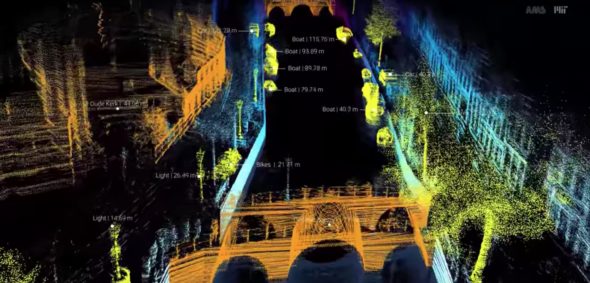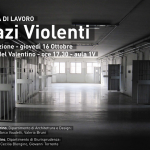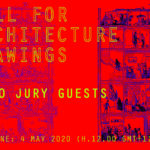Eyes of the City

Open Call
The curators of the Carlo Ratti/South China-Torino Lab (Politecnico di Torino-SCUT) team, are pleased to announce the Open Call for proposals to participate in the “Eyes of the City” exhibition section in the framework of the 2019 Shenzhen Bi-City Biennale of Urbanism\Architecture (UABB). The curators invite international architects, planners, designers, philosophers, thinkers, scientists, companies, educational institutions, research laboratories, think-tanks and students to submit their proposals from April 1st to May 31st, 2019.
The Open Call will accept proposals for design projects, research projects and critical essays that will form the core of the “Eyes of the City” exhibition, that will be hosted in UABB’s main venue. After selecting the proposals for the exhibition, the curatorial team will further discuss and develop them along with the candidates in light of the main exhibition as a whole.
Curatorial Statement
Observing people’s presence in physical space and deciphering their movements and flows have always been critical actions to designers, planners and anyone else who has an interest in exploring how cities work. It was in 1961 that Jane Jacobs, in her seminal book “The Death and Life of Great American Cities”, coined a famous expression to encapsulate a characteristically relational aspect of this observational activity. According to Jacobs, “the natural proprietors” of a certain part of the metropolis – these may be the people who live or work or just spend a substantial amount of time there – become the “eyes on the street.” Their collective, distributed, decentralized gaze becomes the prerequisite to establishing “a marvelous order for maintaining the safety of the streets and the freedom of the city.”
Almost half a century later, we find ourselves at the inception of a new chapter in the relationship between the city and digital technologies, which calls for a reexamination of the old idea of the “eyes on the street.” In the next few years, thanks to the most recent advances in Artificial Intelligence, deep learning and imaging, we are about to reach an unprecedented scenario, the most radical development in the evolution of the Internet-of-Things: architectural space is acquiring the full ability to “see.” Imagine that any room, street or shop in our city can recognize you, and autonomously respond to your presence. With the “eyes on the street,” it was people who looked at other people or the city and interpreted its mechanisms. In this new scenario, it will not be just people but also buildings and streets themselves that acquire the ability to observe and react as urban life unfolds in front of them. After the “eyes on the street,” we are now entering the era of the “Eyes of the City.”
In her original conceptualization, Jacobs used the “eyes of the street” as a tool to dissect a series of key spatial concepts – from the distinction between private and public space, to the limits of urban anonymity, to how borders are expressed and constructed, to the value of safety and the sense of belonging. Tomorrow’s “Eyes of the City,” fueled by historical breakthroughs in AI, from facial recognition to natural language processing, compels us to challenge all of these concepts, while also addressing novel issues – factors like the ethics of technological agency, the meaning of urban observation and design by proxy, the power of data ownership, and the ways in which technology can be re-appropriated by individuals and communities.
What can the consequences of the “Eyes of the City” scenario be on the built environment and on the way people live it? The “Eyes of the City” exhibition at UABB will ask exhibitors to tackle these themes, while focusing on two parallel relationships: the one between space and users and the one between space and design practices, as the latter change under the pressure of technological advancement.
With the “Eyes of the City” Open Call, the objective is to gather proposals that can help frame the discussion around one or more of these issues:
1. How will the new technological scenario change people’s behaviour in the city? How will this articulate the relation between human body and urban space?
2. How can communities interact with and re-appropriate new technology?
3. How do design practices evolve in this context? What is the relation between creativity and increasing automation?
4. What are the most relevant spatial, social and ethical consequences of innovation processes driven by AI?
5. How can designers and citizens harness the power of real-time data in novel ways– especially to foster architecture’s ability to respond to people’s needs?
At the “Eyes of the City” exhibition in UABB 2019, the curators aim to collect hypotheses and suggestions – imaginative, ironic, practical, visionary – so as to reflect on what kind of city we want to build tomorrow.
Call Structure
The Open Call has a triple structure, as applicants can choose between three different types of contribution proposals:
1. Call for Design Projects
2. Call for Research Projects
3. Call for Papers
Applicants can submit material for one or more types of contributions (Call for Design Projects, Call for Research Projects, Call for Papers), though they are strongly encouraged to choose only one of the three.
Deadline
May 31, 2019
Go to the official call
Questo sito usa Akismet per ridurre lo spam. Scopri come i tuoi dati vengono elaborati.








Lascia un commento